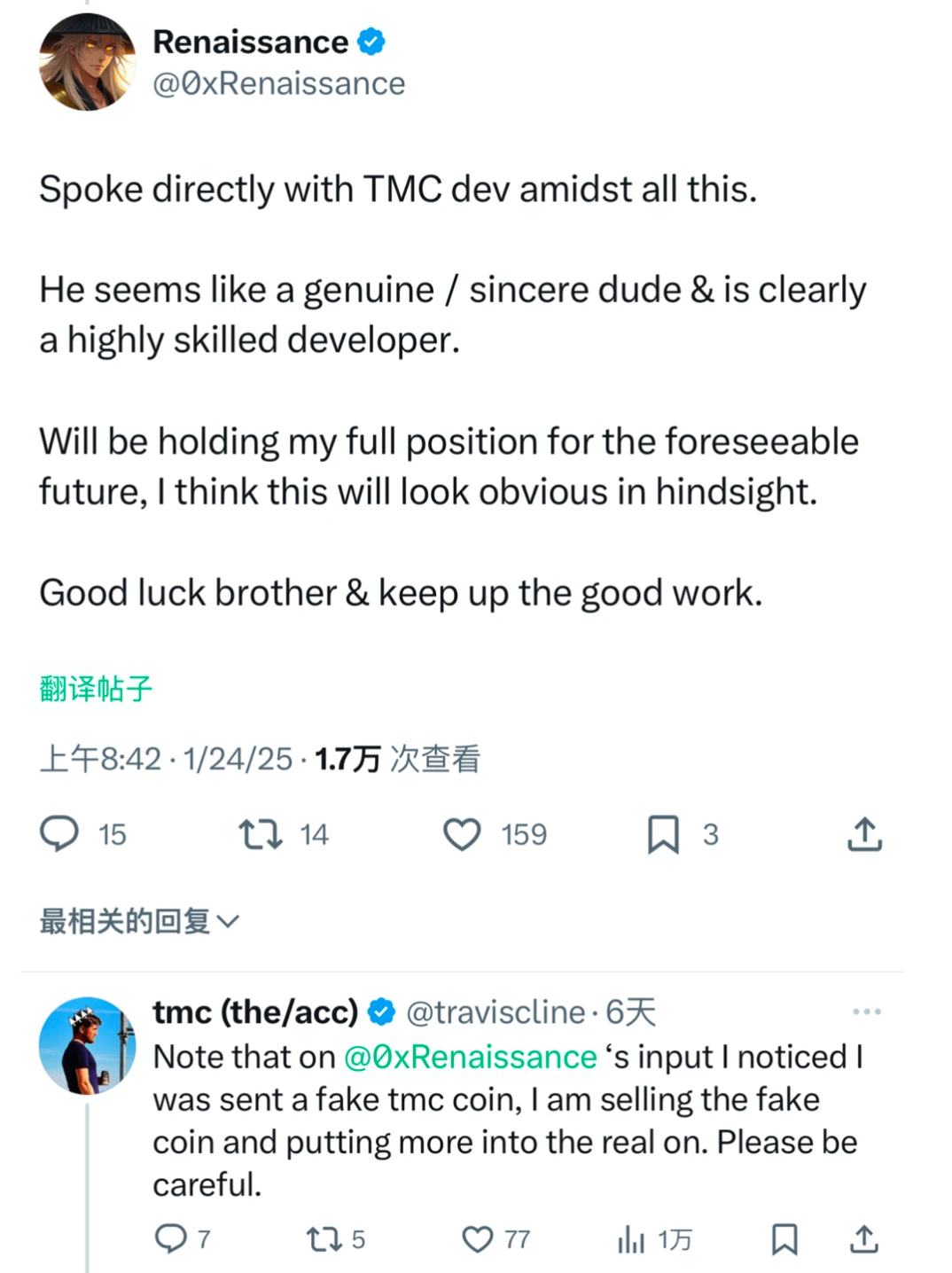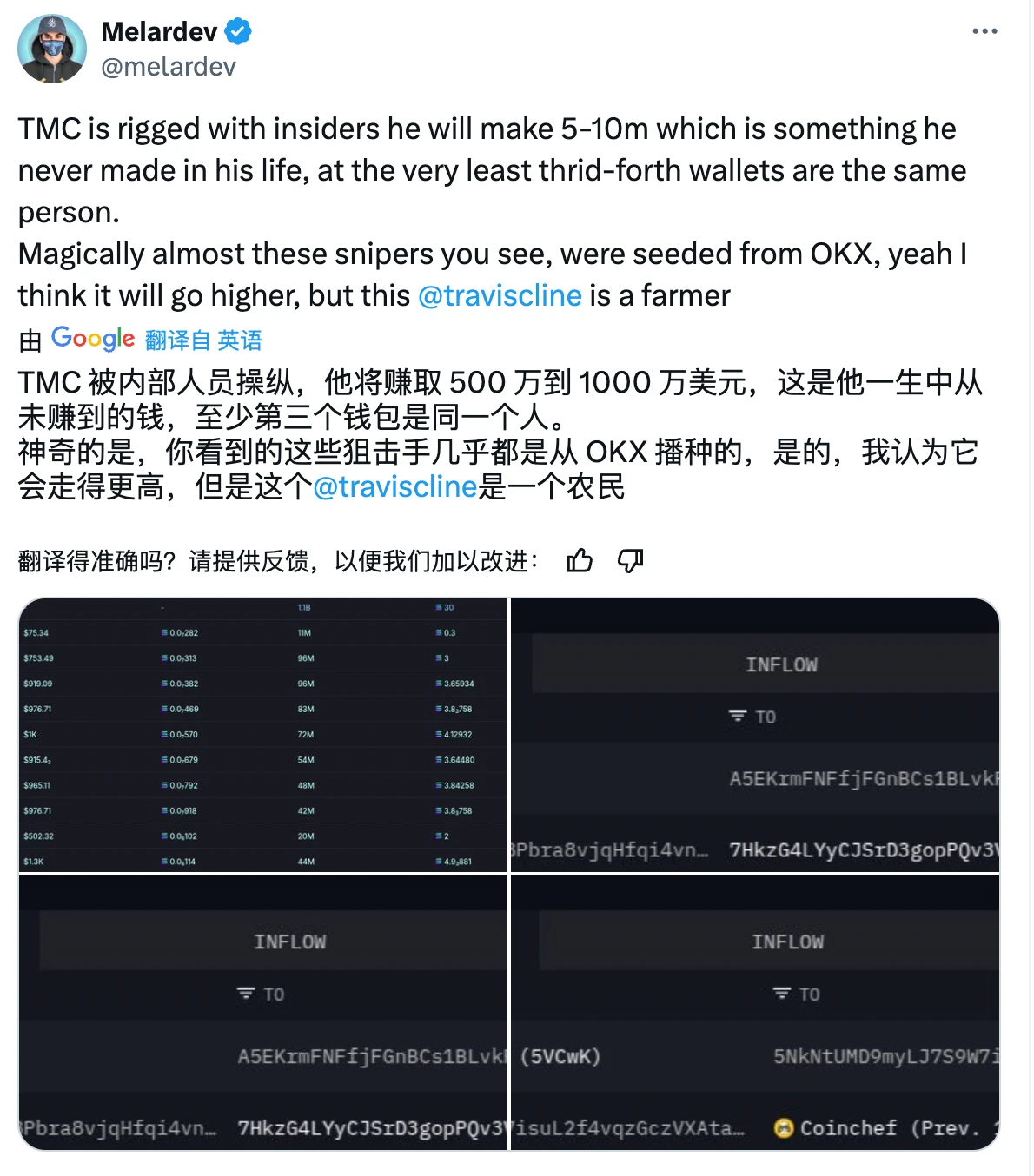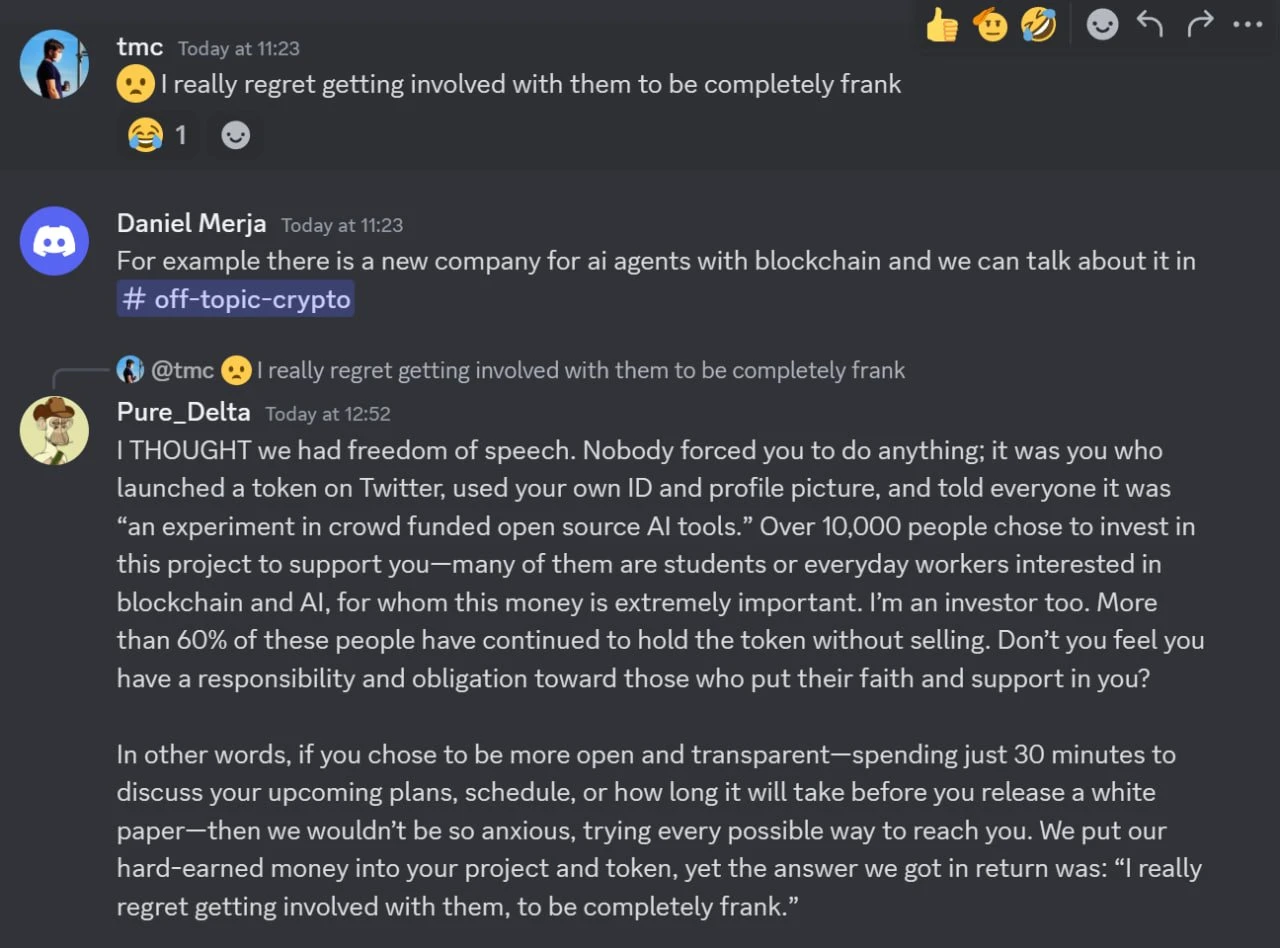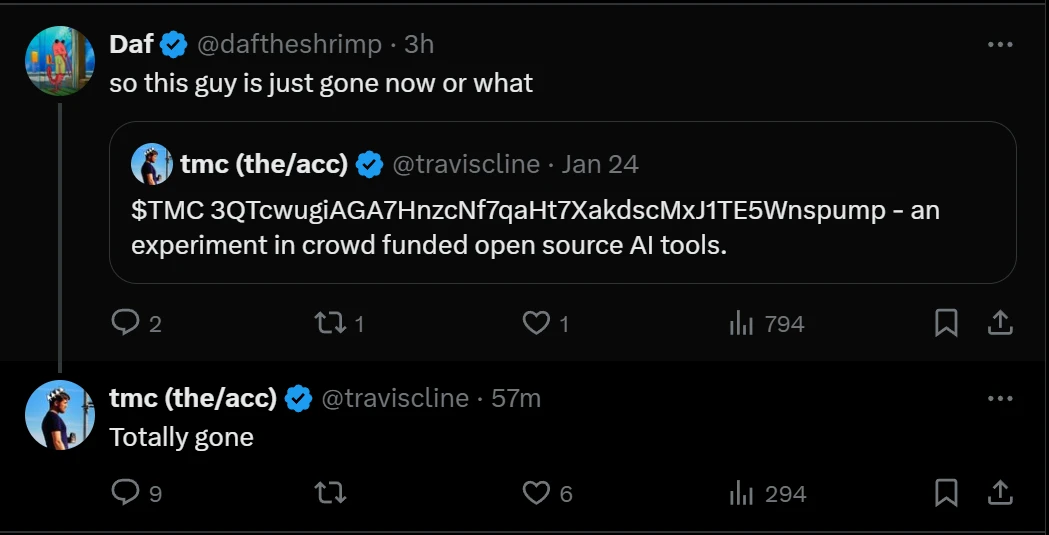Author: Dorian
These are the darkest six days of my life. Violet, a single mother, still trembles. The 400,000 yuan education fund prepared for her daughter is now less than 30,000 yuan after the collapse of trust. This AI scam, which uses Nvidias technology halo as bait, is subverting the foundation of trust in the crypto world.

The whole scam
The perfect kill for the technical butcher
On January 24, 2025, a tweet ignited the crypto community. Nvidia core engineer Travis Cline (@traviscline) released a token called TMC Corp (TMC)
His resume is perfect: LinkedIn shows that he is not only a core member of Nvidias AI team, but also a founding engineer of the acquired Brev.dev; his GitHub account has 5,500 stars, and his open source project langchaingo is regarded as a benchmark by developers. Thousands of investors quickly poured in, and TMCs market value quickly reached more than 20 million US dollars. However, Travis deleted the tweet soon after, causing TMCs price to plummet in a short period of time.
But not long after, Travis announced on Twitter: TMC - a revolutionary experiment of crowdfunding open source AI tools. Everyone realized that this was not a meme coin, but an open source AI tool project issued by NVIDIA core team members to raise funds from the public. At the same time, crypto KOL @OKRenaissance verified with Travis himself through private channels and confirmed that the token was issued by him. When everyone knew that TMC was issued by Travis himself, TMC was snapped up in the market again, and the market value reached more than 30 million US dollars.
Just when everyone thought they had invested in a promising AI project, the situation changed unexpectedly. Several addresses that purchased very early began to sell off their stocks crazily, and many addresses that purchased very early began to sell off their stocks in large quantities. According to incomplete statistics, the profits exceeded 3 million US dollars. This is not a mistake, but a carefully designed harvest. The on-chain detective @MelarDev found that these operations were very likely premeditated. At the same time, many victims also bought TMC fake coins. Because the hacker sent the TMC fake coins to Travis wallet, Travis immediately sold all the TMC fake coins and only used a small amount of SOL to buy back the real TMC coins. He recharged the remaining SOL that all the victims were defrauded of to centralized exchanges and put it into his own pocket.

Tracking tweets from Chain Detective
After that, dozens of investors tried various channels but received no response from Travis. When investors flocked to Discord to question him, Travis rudely removed these people from the channel and deleted all their messages, leaving a sentence I regret dealing with crypto people and disappeared.

After the deed is done, get away safely
At this point, the price of TMC has fallen by more than 94%, almost to zero.
Nvidias brand is more effective than any white paper
After losing contact, Travis even recently tweeted in a mocking tone that he had left the project, leaving investors in a mess to pay for his harvest.
Klose is a recent college graduate who has been working for less than a year. He invested the money he earned from working in TMC because he believed that this was a crowdfunding project released by NVIDIAs real-name core developers and that there would be actual products behind it. He bought $11,000 worth of TMC tokens in succession, and as of today, he has lost more than 90%. He told us that he doesnt even know how to pay the rent for the next quarter.
Violet is a salesperson in the traditional industry and the mother of a 3-year-old daughter. She saw Travis LinkedIn profile and that he worked for NVIDIA, so she thought he would continue to support and develop his crowdfunding project, so she learned about and bought TMC on the Solana chain for the first time. In 6 days, she lost more than $50,000 in TMC tokens, which was her entire salary plus sales commission for a year and a half. Now she can only rely on drugs to sleep normally.
Roger is one of the largest individual investors in the TMC project, and also the biggest loser. To quote Roger, he has made many investments in both the primary and secondary markets, and he doesn’t care if the project fails after trying hard, because this is the risk that innovation should take. But innovation and fraud are two different things. Tens of thousands of people choose to support you with real money, but you delete their messages, kick them out of the community, refuse to communicate, and make profits by selling tokens. This is a naked fraud.

Direct statement: I am out
Roger said that if his and other TMC holders reasonable demands are still not responded to, he and other TMC holders in the Bay Area will go to Nvidias Santa Clara headquarters for a protest march, and he is ready to join many $TMC defrauded investors in contacting lawyers to initiate a class action lawsuit against Travis.
The crossroads of the crypto industry: from “Meme carnival” to value reconstruction
This incident coincided with a critical transition period for the crypto industry: the speculative frenzy of Meme coin has not yet subsided, but a group of value-oriented projects represented by AI, DePIN, and on-chain computing are trying to reshape the logic of the industry. Travis Clines scam hit the vulnerable point of this transition period.
Meme coins open card game: Dogecoin, Pepe and other meme projects never conceal their entertainment attributes, and investors know that they are participating in a high-risk speculative game. Travis Clines fraud is essentially a betrayal of the AI open source community. He used his technical reputation on GitHub (5,500 stars, open source project langchaingo) to package the scam as a crowdfunding open source AI tool. This behavior is far more harmful than ordinary meme speculation because it destroys the most scarce resource in the crypto industry - trust in technology innovators.
Open source projects are supposed to be a symbol of technological democratization, but this incident exposes a cruel reality: the halo of technological elites can become a cover for fraud. If similar incidents occur frequently, investors will gradually become wary of innovative projects that are developer-driven, making it difficult for truly valuable grassroots projects to obtain financial support.
In the current survival battle of value-based projects, many teams are exploring the true value through on-chain AI model training and decentralized computing power market. If similar fraud incidents are allowed to spread, these efforts may be labeled as scams.
The crypto industry is in the transition period from a casino to a toolbox. Only by resolutely resisting technical fraud and supporting real innovation can the industry get out of the bubble and win the recognition of mainstream society.
Technology for good requires the bottom line protection of the entire industry
The Travis Cline incident is a mirror that reflects the challenges faced by technology giants, open source communities, and the crypto industry: when technical authority is abused and when the ideal of innovation is tarnished, the foundation of the entire ecosystem will be shaken. We call on:
· NVIDIA: Take this incident as a warning and incorporate employee ethics review into the technical capability assessment system;
AI developers: Use transparency actions to rebuild society’s trust in open source innovation;
· Crypto industry: Build an “anti-fraud firewall” to provide a breeding ground for valuable projects.
Only in this way can technology truly become a flame that drives human progress rather than a wildfire that burns trust.










